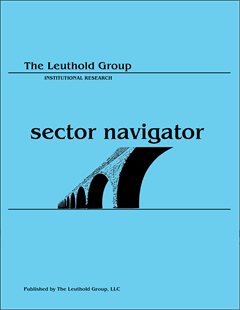Risk Aversion
Risk Aversion Index: Stayed On “Higher-Risk” Signal
The market seems very eager to price in peak central-bank hawkishness; but only time will tell if the BoE pivot marks the beginning of a global pivot cycle. Caution is still recommended.
Risk Aversion Index: Stayed On “Higher Risk” Signal
We believe the negative impact of central bank liquidity reduction is here to stay for the foreseeable future. We recommend defense within fixed income.
Risk Aversion Index: Stayed On “Higher Risk” Signal
Volatility among non-equity asset classes has gone up noticeably while the VIX dipped lower. We still expect volatility to stay high and continue to play defense within fixed income.
Risk Aversion Index: Stayed On “Higher Risk” Signal
We expect volatility to stay high and still recommend defensive positions within fixed income.
Risk Aversion Index: Stayed On “Higher Risk” Signal
While concerns about a trade war might be easing and the credit market has been largely unaffected by the surge in Libor rates, we have to recognize the fact that Trump’s policy focus has become increasingly market-unfriendly while global central banks are in a liquidity-reducing mode.
Risk Aversion Index: A New “Higher Risk” Signal
While the late rebound in risky assets pared back earlier losses, weakness was observed in all major risk asset classes. We continue to recommend defense for the time being.
Risk Aversion Index: Turned Higher But Stayed On The “Lower Risk” Signal
Our Risk Aversion Index turned higher last month but stayed on the “Lower Risk” signal as of the end of January. The first few days of February brought a big surge in this index and would suggest a “Higher Risk” stance for the near term.
Risk Aversion Index: New “Lower Risk” Signal
Our Risk Aversion Index turned lower in December and reached an all-time low. We remain favorable toward higher quality credit within fixed income.
A New “Higher Risk” Signal
The index ticked up on the back of higher VIX, a High Yield credit mini sell-off, and EM underperformance. We are turning a bit more cautious toward credit but still recommend safe spreads within fixed income.
RAI Stayed On “Lower Risk” Signal
The range-bound interest rate action provides a friendly environment to earn the carry, through moderate duration and high grade credit exposure.
Risk Aversion Index: Stayed On The “Lower Risk” Signal
We believe the “Goldilocks” environment is still intact. Earn the carry.
Risk Aversion Index: Stayed On The “Lower Risk” Signal
With the “Goldilocks” scenario still intact, we believe earning the carry is the right approach and high grade credit fits the bill.
Risk Aversion Index: Stayed On The “Lower Risk” Signal
With neither inflation nor recession an imminent threat, the “Goldilocks” scenario remains intact. We continue to view high grade credit favorably within the fixed income space.
Risk Aversion Index: New “Lower Risk” Signal
“Lower Risk” signal closed out the “Higher Risk” signal generated five months ago. We’re encouraged by the resilience in risky assets during the oil sell-off and the late surge in global bond yields. We’ve been favorable toward high-grade credit and maintain this view within the fixed income space.
Risk Aversion Index: Still On “Higher Risk” Signal
The global risk rally is broad-based enough to justify a favorable credit view and we still believe higher quality credit offers better reward/risk.
Risk Aversion Index: Still On “Higher Risk” Signal
Last month, we recommended going up in quality within fixed income and we maintain this cautious stance for the time being.
Risk Aversion Index: Still On “Higher Risk” Signal
We recommend going up in quality across the whole fixed income spectrum.
Risk Aversion Index: Stayed On The “Higher Risk” Signal
While we continue to view spread products favorably within fixed income, the March rate hike has yet to have its impact play out. In the near term, we will respect the “higher risk” signal and exercise caution.
Risk Aversion Index: A New “Higher Risk” Signal
This new signal is mostly due to a much lower reading three months ago.
Risk Aversion Index– Stayed On “Lower Risk” Signal
Given the not-too-hot-not-too-cold macro backdrop, we expect the credit rally to continue in the near term and favor spread products within fixed income.
Risk Aversion Index—New “Higher Risk” Signal
With global bond yields plumbing new all-time lows, we continue to favor Higher Quality credits within fixed income.
Risk Aversion Index—Stayed On “Lower Risk” Signal
After the last couple months’ strong surge, risky assets are entering a seasonally unfavorable period, with Brexit looming particularly large in the near term. We still favor higher quality credits within fixed income.
Risk Aversion Index—A New “Lower Risk” Signal
We are getting more constructive on credits but we are still keenly aware of the highly volatile market environment and would recommend modest exposure to lower quality credits at this point.
Risk Aversion Index - Stayed On Higher Risk Signal
The level of this index is in an extreme zone where false alarms are more likely as small movements in the index can trigger new signals.
Risk Aversion Index Falls To New “Lower Risk” Signal
The RAI had the biggest drop of the year in September and triggered a new “Lower Risk” signal. This is largely due to the no-taper decision by the Fed. We remain cautious in the near term due to the debt ceil- ing debate but recommend increasing risky exposure after the debt ceiling resolution.
RAI Rises Again, Stays On “Higher Risk” Signal—Remain Cautious
The RAI rose again in June and stays on a “High Risk” signal. June saw an acute case of carry trade reversal; we remain cautious and recommend higher quality within fixed income.
RAI Rose Again And Stays On “Higher Risk” Signal—Remain Cautious
The RAI rose in May and stays on a “High Risk” signal. We remain cautious and recommend higher quality within fixed income.
Risk Aversion Sharply Lower—But Optimistically Cautious
We remain optimistically cautious, as we believe the determination of the policy makers to prop up the market should not be underestimated, especially in an election year.
The State of Momentum Investing: A Global Perspective
Most quantitative portfolio managers employ some variation of the momentum strategy, and most have had a hard time with this particular strategy since the end of 2007.
View from the North Country
Human behavior demonstrates that individuals as a group are risk averse…studies of investor behavior have yielded some interesting findings. Also, Japanese low interest rates in themselves have not yet converted caution and pessimism into confidence and optimism.
View from the North Country
Proportionately, equity investment professionals have the most to lose when the Great Bull Market ends. But are investors really aware of their own potential stock market risks?
































